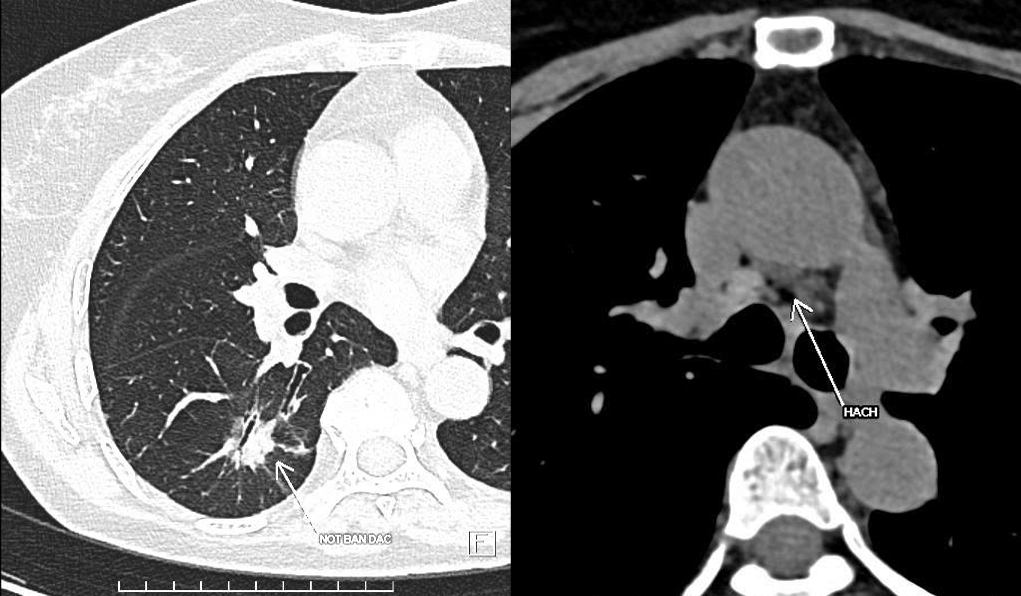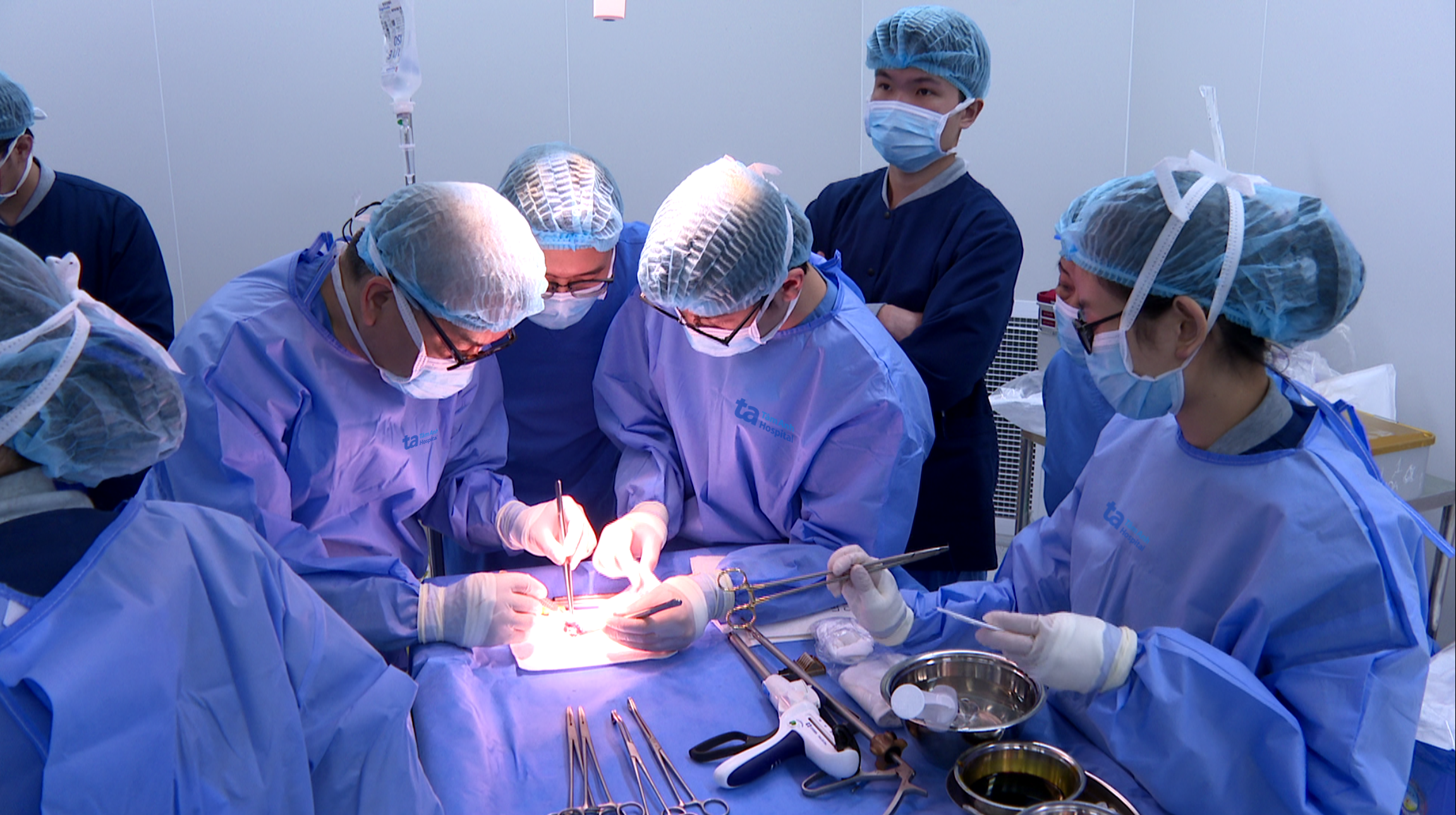Three months prior, Lan was diagnosed with stage 3A lung cancer with lymph node metastasis at a local hospital and advised to undergo long-term systemic chemotherapy. Seeking a second opinion at Tam Anh General Hospital in Hanoi, a CT scan revealed a small, nearly 2 cm tumor in her right lower lung lobe. The mediastinal and subcarinal lymph nodes (where the right and left bronchi divide) appeared flat, with regular borders, and retained their normal structure.
Dr. Vu Huu Khiem, Head of the Oncology Department, explained that the lymph nodes hadn't been infiltrated because the images showed regular borders, suggesting a high probability of early-stage, 1A lung cancer. Lan was scheduled for minimally invasive surgery to remove the lower lobe of her right lung, along with mediastinal lymph node dissection.
 |
The lung tumor and lymph nodes on Lan's CT scan. Photo: *Tam Anh General Hospital* |
The surgical team removed the lower right lung lobe containing the solid tumor and dissected 11 surrounding lymph nodes, sending them to the Anatomic Pathology and Cell Biology Center. Results confirmed early-stage lung adenocarcinoma, with 11 out of 11 lymph nodes showing inflammation, not metastasis.
Lan recovered well after surgery, with her cough, chest tightness, and shortness of breath resolved. After six days of monitoring and positive respiratory function assessment, she was discharged. A follow-up appointment two months later showed good lung expansion and respiratory recovery, requiring no further treatment. Another follow-up was scheduled for three months later.
Lung adenocarcinoma is the most common type of primary lung cancer, belonging to the non-small cell lung cancer (NSCLC) group. Dr. Khiem noted that early detection and surgical intervention can lead to complete remission, with a potential cure rate of up to 90%. Conversely, late-stage diagnosis with distant metastasis presents greater treatment challenges.
 |
Doctors prepare lymph node samples for biopsy. Photo: *Tam Anh General Hospital* |
Globocan 2022 reported over 24,400 new lung cancer cases and nearly 22,600 deaths in Vietnam. Lung cancer symptoms include coughing, coughing up blood, shortness of breath, wheezing, chest pain, and hoarseness.
Dr. Khiem recommends that individuals experiencing these symptoms seek medical attention for examination, testing, and diagnostic imaging. Those over 50 with risk factors such as smoking, secondhand smoke exposure, exposure to silica, asbestos, radon, heavy metals, or a family history of lung cancer should undergo regular low-dose CT lung screenings for early detection of lung abnormalities. Current CT scanners with unlimited slices offer increased accuracy in screening, while using low radiation doses equivalent to a standard chest X-ray, making it safe for high-risk individuals. Adopting a healthy lifestyle, avoiding smoking, limiting alcohol consumption, ensuring occupational safety, and maintaining a clean living environment contribute to lung cancer prevention.
Thanh Long
| Readers can submit questions about cancer here for doctors to answer. |












